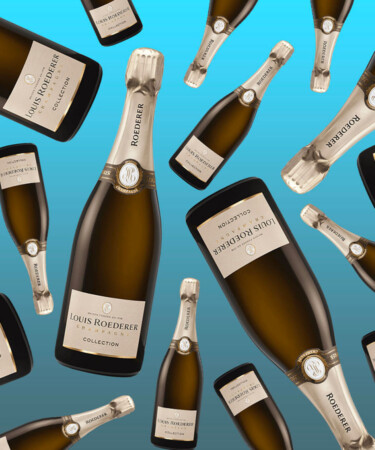
Need To Know

11 Things You Should Know About Louis Roederer
words: Olivia White
Known for producing some of the world’s best Champagnes, Louis Roederer ’s roots stretch all the way back to 1776. Originally founded as Dubois Père & Fils, the Champagne house was inherited in 1833 by Louis Roederer, who renamed the Maison in his own honor.
Almost immediately after Roederer took the helm, the quality of the vineyard’s soil became top-priority in order to produce the best wines. The house quickly acquired numerous vineyards, allowing it to have full control over quality and care while many other sparkling wine producers continued to source from growers. Today, Louis Roederer owns over 240 hectares (593 acres) of grand cru and premiere cru vineyards across three of Champagne’s classic districts: Côte des Blancs, Montagne de Reims, and Vallée de la Marne.
Now that you know the basics, here are 11 more things you should know about Louis Roederer.
Louis Roederer made a controversial decision when he first inherited the Champagne house.
Louis roederer was one of the first champagne producers to adhere to the parcel method., the champagne house produces one of the world’s most coveted labels…, …and its famous bottle was created to help keep royalty alive., the brand’s bubbly ages for much longer than the champagne region mandates., many of louis roederer’s champagnes are still riddled by hand., louis roederer is one of the few remaining family-owned champagne houses., in 2002, louis roederer became one of the first in the region to adopt biodynamic farming practices..
In the late 1990s, Louis Roederer initiated a review indicating the direction of Champagne as a region and made the decision to invest significantly in the regeneration of soil and completely eliminate the use of chemical fertilizers. By the early 2000s, the house was among the first few in Champagne implementing organic and biodynamic practices. Fifty percent of all Louis Roederer vineyards are currently certified organic, and the remaining 50 percent are farmed biodynamically. The latter technique is showcased through the brand’s three vintages of Brut Nature Champagnes.
A fraction of the vineyards owned by Louis Roederer are plowed by horses.
The champagne house has a collection of still wines., the brand has a california outpost..
Established in 1982 by then-president Jean-Claude Rouzaud, Roederer Estate is located in California’s Anderson Valley and is known for its sparkling wine production. The winery’s vineyards, which took Rousaux years to select, originally consisted of just 340 acres but have since swelled to 620 acres of Pinot Noir and Chardonnay plots from across the AVA. Like its French ancestor, Roederer Estate’s vineyards are 100 percent organic with select vineyards farmed using biodynamic methods.
Recent Louis Roederer Reviews
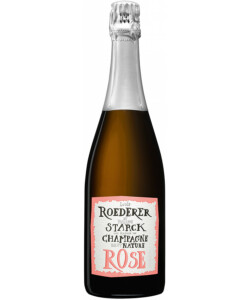
Published: February 9, 2024
- 11 Things You Should Know About Louis Roederer | VinePair
- https://vinepair.com/articles/ntk-louis-roederer/
- brand_profile
- wbs_cat Wine, wbs_type Champagne, wbs_brand Louis Roederer, champagne, cristal, need to know, Wine, winery
- Pinot Noir and Beyond: Everything You Need to Know About Oregon Wine | VinePair
- https://vinepair.com/articles/everything-you-need-to-know-about-oregon-wine/
- Margot Bigg
- wbs_cat Wine, wbs_type Pinot Noir, wbs_type Syrah, wbs_type Tempranillo, wbs_brand Oregon Wine Board, Oregon wine, Oregon Wine Board, pinot noir, Portland, Tourism, Travel, Willamette Valley
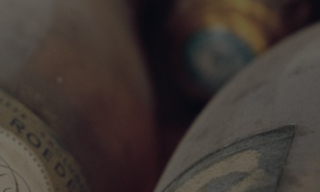
- Download the app

— « Solar Panel » de Jean-Charles Gutner —
Working to protect biodiversity.
"In the 21st century, the battle is for Nature: respect for the land has never been so vital. It means lending the vine greater resilience, recreating as much diversity as possible, enriching the ecosystem with different species and charting our own course." — Jean-Baptiste Lécaillon, Cellar Master
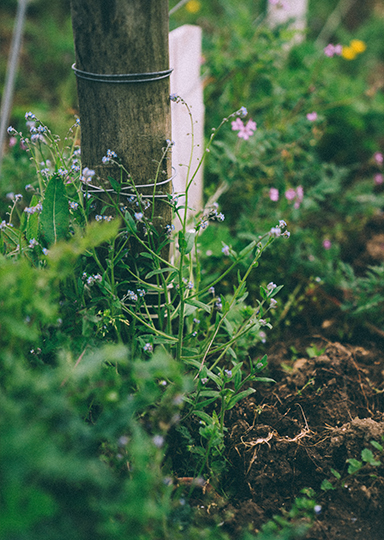
THE BEAUTY OF THE ECOSYSTEM
From diversity comes great wealth - a wealth of flavours and tastes, a wealth of expressions, profiles and sensibilities. For over 20 years, Louis Roederer has been working to preserve the diversity of its plant heritage, conserving its genetic variations and thereby the singularity of a unique taste that is part of its champagnes' identity. Constantly seeking the most accurate expression of its terroirs, Louis Roederer started using sustainable and responsible winegrowing practices back in the early 2000s. As Nature is continually adapting in response to changes in the climate, Louis Roederer created a conservation scheme for its plant heritage, the only one of its kind in France. By monitoring and then selecting the most resilient vines, the Champagne House is continuing the thread of an adapation process that has been ongoing for hundreds of years.
A LONG-STANDING COMMITMENT
The Louis Roederer Champagne House has long been committed to sustainable and responsible agronomic practices. In the late 1990s, Louis Roederer initiated a review of the future direction of its viticulture, which was led by the Rouzaud family and Jean-Baptiste Lécaillon. The regeneration of the soils with the discontinuation of chemical inputs soon led them to question the quality and longevity of the plant material used.
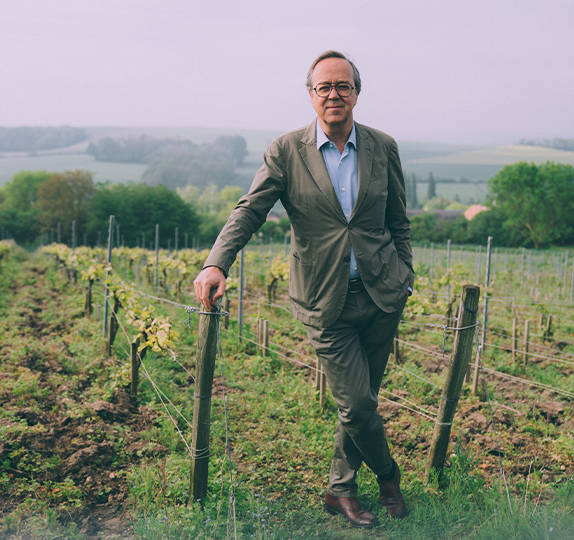
Faced with climate change that is forcing nature to adapt at an ever-increasing pace, Louis Roederer has sought to better understand and work with climate change in order to constantly seek the most accurate expression of the terroirs and craft the finest champagnes possible. To respect the living ecosystem, Louis Roederer lends Nature a gentle hand, using the most respectful practices possible. These practices include the preservation of the vines’ genetic diversity through massal selection, the growing of rootstocks - the base plant that receives the vine graft - on the Louis Roederer Estates, pruning that respects the sap flow, maintenance of hedgerows and low walls, introduction of beehives, the presence of fruit trees (old varieties of peach, pear and apple trees), rotation of vineyards and fallow land, and the preservation of the vineyard plots as if they were a precious geological mosaic.
THE PRESERVATION OF OUR HISTORICAL PLANT HERITAGE
In keeping with this approach, more than 20 years ago Louis Roederer launched a programme to preserve its plant heritage, the Champagne House's ancestral natural heritage, whose uniqueness and diversity play a major role in the identity of its wines and the creation of their unique taste. Massal selection, practised by Louis Roederer, consists of selecting vines with diverse genetic potential from a diversified population, from which a shoot, the "graft", is taken and grafted onto a rootstock. This procedure is carried out to preserve and perpetuate these specimens, in their greatest diversity.
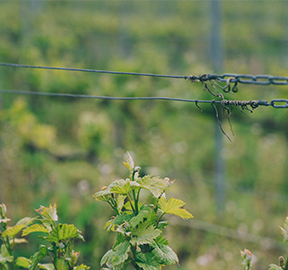
— Jean-Baptiste Lécaillon, Cellar Master
AN ARTISTIC PROJECT : "SOLAR PANEL" BY JEAN-CHARLES GUTNER
"This work is a living memory of the Champagne region and inspires our daily reflection, encouraging us to continue along the course we have set ourselves." — Jean-Baptiste Lécaillon, Cellar Master
THE IMPORTANCE OF BIODIVERSITY IN OUR VINEYARDS
Jean-Charles Gutner started exploring the French vineyards in 2015, seeking to capture the most striking matrix, the spring foliage shielding the future grapes. "Solar Panel", a photographic work exploring the biodiversity, was derived from this personal collection. For Jean-Baptiste Lécaillon, "Solar Panel" is a means of capturing the story of a thriving ecosystem and recreating its beauty while highlighting the importance and potential of massal selection practised in the Louis Roederer vineyards.
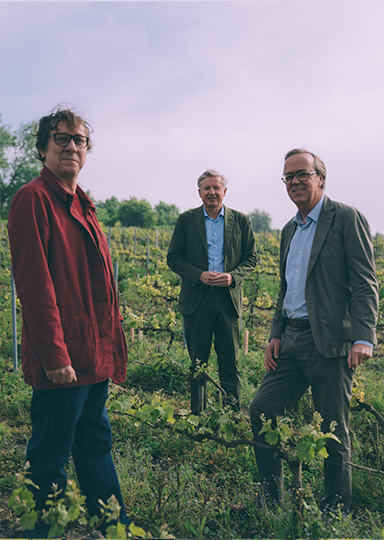
An admirer of the work of the Louis Roederer Champagne House and its way of communicating its fascination and attentiveness to Nature, Jean-Charles Gutner met with Jean Baptiste Lécaillon. Their conversations led to this intimist project in which the photographer would explore the heart of the Louis Roederer Estates in order to reveal the vine in all its genetic diversity.
TOMORROW, AN ENTIRE ECOSYSTEM… "IN VINIFERA ÆTERNITAS"
"We must reconnect with our roots, trust in the longevity of our Vitis vinifera, and continue writing our story by helping the vine to develop this amazing diversity, which creates nuances and complexity in the wines." — Jean-Baptiste Lécaillon, Cellar Master
THE RESULT OF OUR REFLEXION
Our work on biodiversity began in the 1990s; it continues to make progress and guide our future viticulture to ensure our vines will still be here in 60 years’ time. In 30 years, the entirety of the Louis Roederer vineyards will therefore be planted with vines selected entirely by us from our own nursery. Nobody else in the Champagne region is doing this.
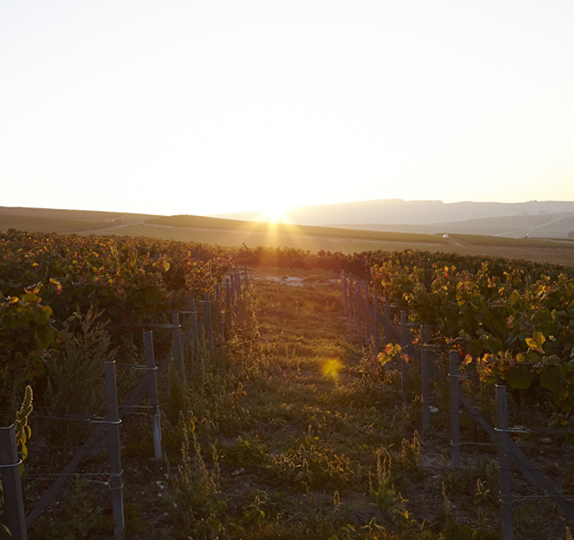
THE ULTIMATE QUEST
Louis Roederer is thus charting its own course, drawing inspiration from the past with a view to the future. The preservation of our historical plant heritage gives us special hope, all the beauty of the ecosystem, its mystery and the diversity of flavours.
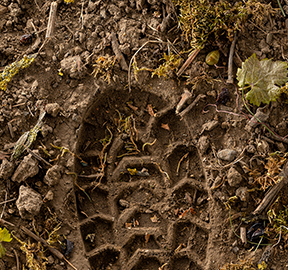
Find out more about the expression of biodiversity in the Louis Roederer vineyards
This site needs Javascript enabled to work correctly, please turn it on within your browser settings. Or place an order with Customer Services on 0800 188 881 or [email protected]
- More from Waitrose:
- My Address Book
- Marketing Preferences
- My Products
- My Shortlist
- myWaitrose Membership
Sorry your session has timed out To maintain your security you have been logged out from Waitrose Cellar due to no activity. Sign in again X


Louis Roederer Cristal
From award-winning Wine Enthusiast's Winemaker of the Year Jean-Baptiste Lecaillon comes the iconic Cristal. Intense and refined it has notes of apricot, hazelnut and Danish pastries. It's is a champagne for the ultimate celebration.
Wine at a glance

- Bin no: 017830
- Alc Vol: 12.00 %vol
- Vintage: 2014
- Closure: Natural Cork
- Grape: Pinot Noir Chardonnay
- Region: CHAMPAGNE , France
- Special Features: -
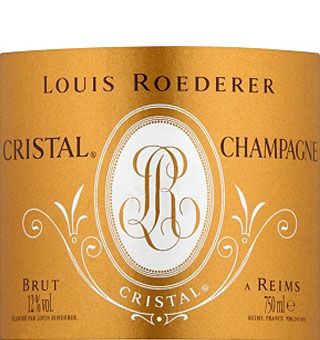
Louis Roederer
His heir, Louis Roederer II was equally particular and conscientious about his approach to the production of champagne, as instilled by his adoptive father.
Today the house is run by Jean-Claude Rouzaud the grandson of Camille Roederer.
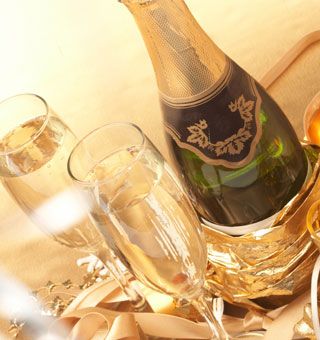
Tasting Note Louis Roederer Cristal 2006
An intense and refined blend of Pinot Noir and Chardonnay, it has notes of apricot, hazelnut and fresh pastry. Luxurious and rich, it's the ultimate Champagne for celebrations.
Search results
Showing bottles from merchants at in .

In 1845, at a time when majority of winemakers were buying the grapes rather than cultivating their own, Louis Roederer took a visionary approach. Wanting to master every aspect of the wine's…

Roederer/Louis Brut Champagne Cristal 2015 | Vintage Sparkling Wine from Montagne de Reims, Champagne, France

Louis Roederer Champagne Cristal Brut 2015 (750ml) available at Winovisor in Washington, DC

Roederer/Louis Brut Champagne Cristal 2006 | Vintage Sparkling Wine from Champagne, France

Roederer/Louis Brut Champagne Cristal 2014 | Vintage Sparkling Wine from Montagne de Reims, Champagne, France
Louis Roederer Champagne Cristal Brut 2012 (750ml) available at Winovisor in Washington, DC
Louis Roederer Cristal 2014

If the 2014 vintage was especially open and demonstrative, the 2015 Cristal is going to require more patience. Unwinding in the glass with aromas of citrus oil, crisp stone fruits, white flowers,…

The TSAR'S Wine Our House's most famous wine was created in 1876 to satisfy the demanding tastes of Tsar Alexander Ii. The emperor asked Louis.

1 2 3 4 5 6 7 8 9 10 11 Next >
- Give us Feedback
- About 1000 Corks
Choose your currency:
- $ United States Dollar (USD)
- £ British Pound (GBP)
- € Euro (EUR)
- C$ Canadian Dollar (CAD)
- R$ Brazilian Real (BRL)
- HK$ Hong Kong Dollar (HKD)
- ₹ Indian Rupee (INR)
- NZ$ New Zealand Dollar (NZD)
Your Location
You can enter any of the following (includes examples):
Only locations in the United States are supported at this time.
Suggestion Box
Help us improve, tell us your email and we will respond to your suggestion., login required.
To star this wine, you need to login with Facebook first.
Social sharing
Did you like this? Help 1000 Corks by bookmarking and sharing it:
To add it to your blog or web page cut and paste the code below: <a href="https://1000corks.com/s/cristal-champagne">Find cristal champagne at 1000 Corks</a>
MIA > Archive > Mandel
Ernest Mandel
De gaulle’s trip to moscow.
Source: From World Outlook , 29 July, 1966, Volume 4, No. 24, Paris and New York City Written: July, 1966 Translated: by World Outlook Transcrition & Marked-up: by David Walters for the Marxists’ Internet Archive 2009. Public Domain: Creative Commons Common Deed . You can freely copy, distribute and display this work; as well as make derivative and commercial works. Please credit “Marxists Internet Archive” as your source, include the url to this work, and note any of the transcribers, editors & proofreaders above.
[The following article has been translated from the July 9 issue of the Belgian left socialist weekly La Gauche.]
“As to alliances, we would think that they ought to be constructed ‘in three stages’: a Franco-Russian treaty procuring a first degree of security; the Anglo-Soviet pact and an agreement to be concluded between France and Great Britain constituting a second degree; the future pact of the United Nations, in which America would be a capital element, crowning the whole and serving as the ultimate recourse.” It was in these terms that Charles de Gaulle in December 1944, at the time of his first trip to Moscow, defined his concepts concerning European security, according to his Memoirs. (Volume III, p. 83, “Livre de Foche” edition.) Many things indicate that he has not changed his mind twenty-two years later. Wasn’t his second trip to Moscow designed to advance this concept?
Those with a more dour outlook will immediately object. The head of the Fifth Republic had something much more Machiavellian in mind. What he is aiming at is the predominance of France in Europe, or at least Western Europe if he is unable to extend it “from the Atlantic to the Urals.”
Since France doesn’t have the necessary economic weight, it must neutralize the drive of German industry through military superiority and diplomatic ruses. Hence it has two interests in common with the Kremlin—to block the Bundeswehr from getting nuclear arms and to break the American grip on “little Europe.” Thus the trip to Moscow was a power play against Washington and Bonn.
No doubt these analysts are right on the long-range aims of the general. But the nature of things is such that the designs of men—no Tatter how imbued with their own “grandeur”—are not at all sufficient to shape the destiny of the world. This is determined by the relationship among the big social forces. More than once in history, the diplomatic maneuvers of a power that was too weak have ended in serving the ‘big ones” despite the best intentions in the world. Didn’t this happen once again with the trip to Moscow?
Thus in the United States, the most cunning, like the servile tools of the (Johnson administration, carefully refrained from denouncing the general. “De Gaulle in Moscow served the United States despite the United States,” said some. ‘He worked for the whole West,’ others said approvingly. In Bonn, after weeks of glacial chill, the barometer of Franco-German relations again points to “fair weather.”
The truth is that de Gaulle, contrary to the groundless fears of some, did not betray his West German class brothers any more than he did his Polish class brothers at the time of his first trip.
In December 1944, Stalin dangled a “good, firm alliance,” real support against the Anglo-Saxons, in return for immediate recognition of the Lublin committee. But de Gaulle was not deceived. This would moan betraying a perhaps ‘democratic’ but certainly bourgeois Poland in behalf of a perhaps despotic but certainly noncapitalist Poland. And he did not want to take responsibility for an act contrary to “honor and honesty.” (Memoirs, Volume III, p sa.)
In June 1966, Brezhnev and Kosygin dangled an offer of just as real support against the United States, even genuine political leadership in Europe. In exchange they asked for recognition of the German Democratic Republic; that is, “of the two German states.” Be Gaulle brusquely replied that there could be no question of recognizing this “artificial construction. And with that rejoinder the serious conversation came to an end. The balance was nothing but decorations and fine talk.
Of course, the differences between Paris and Washington, between Fans and Bonn, are real in relation to the political future of our continent, its relations with the United States and the best strategy to follow to block the rise of the anti-imperialist and anticapitalist forces in the world.
Be Gaulle seeks a Europe freed largely from American supremacy. He seeks an Atlantic alliance on the basis of equality between North America and a Western Europe combined under his guidance. He favors a more supple policy, with regard to the USSR, which in his opinion should be definitively separated from China and the “extremists” among the revolutionists of the Third World, through some indispensable concessions.
He holds that it is necessary to “relax” the tensions to be able to resolve the questions in dispute, such as the reunification of Germany, while the Americans and the Germans of Bonn maintain that without this reunification no real relaxation is possible in Europe. But at bottom, they all defend a common cause—the cause of Big Capital. They all seek to hold back the enemy—socialism and the peoples of the Third World who are rising and seeking to break out of the capitalist world market. They all seek refuge under the “nuclear umbrella” of the Pentagon, without which they cannot counterbalance Soviet military power on the European continent (if anything confirms this, it is the explosion of the ridiculous French nuclear device in Polynesia which amounts to nothing in face of the power of the USSR). The means may differ, the aim is the same.
In this respect the Soviet Union represents something else again. The means are perhaps the same, but the aim is entirely different. Thus treaties on mutual consultation can be concluded—even by means of a direct telephone line!—treaties on technical cooperation, or whatever cultural and commercial exchanges are desired; the fundamental opposition between the interests of the French bourgeoisie and the Soviet leaders will by no means make it possible to form a genuine alliance in the present world context.
The Soviet leaders are aware of the weakness of the present Communist parties in Western Europe (for which they are in part responsible). They are aware of the temporary stabilization of caitalism in this part of the world (which they largely contributed to). From this they draw the conclusion that it is necessary to return to a policy that seeks to ‘exploit the interimperialist contradictions,” as before the second world war. They commit an error in believing that de Gaulle is ready to follow them into a têtei-tête, when he seeks in reality only to increase his power and prestige within the Atlantic Alliance
The French Communist leaders would obviously make a still greater error in concluding that the time has come for an ‘agonizing revision” of their political orientation in France, as in 1935 or 1944.
It is true that the policy of the USSR places them before a cruel dilemma; they no longer know if they should applaud or complain when the Soviet crowds cheer the person who remains, until proved otherwise, the fiercest and most dangerous class enemy of the French workers. If they oppose him, they are tempted to make an alliance with de Gaulle’s pro-American adversaries like Nollet and Nitterrand—and then the capitals of Eastern Europe are not very contented. And if they approve, what remains of their role as an opposition in France? There remains the socialist perspective which stands in complete opposition to the politics of de Gaulle; but the leaders of the French Communist party do not think this is any more “realistic’ than do the Social Democratic leaders of the SF10, or even the technocratic ideologists of neocapitalism.
That will the practical results of the trip amount to? The American Newsweek summarized the situation as follows: “At least he will have succeeded in engaging the Russians in a new diplomatic dialogue with the West.” That puts it in a nutshell. At a time when the intensification of the American aggression against the Vietnamese people makes a public dialogue between Moscow and Washington more difficult, de Gaulle is playing, objectively, the role of go-between for the Atlantic Alliance as a whole Thanks to him, the head of one of the capitalist states in this alliance has been acclaimed by crowds in the Soviet Union. For the first time in many years they have been shown a face of capitalism which their own leaders now say is benevolent, attractive, peaceful, full of good intentions toward the peoples of the world.
Pravda in connection with this trip, talks about an ‘irreversible process.” Let them beware of certain processes, which while still reversible, bode nothing good for the USSR. By attending mass in Leningrad, de Gaulle, like a good politician, was already prepa:ing for his coming trip to Poland. Rumania, ceaselessly increasing its trade with the West, already told the Russians in Bucharest that it would like to see the Warsaw pact modified just as de Gaulle wants to modify NATO. Decidely, if things are in movement, thanks not a little to the general, not everything is stirring in favor of socialism and not everything is stirring against the interests of American imperialism.
Back to the Ernest Mandel Internet Archive
Last updated on 7 February 2009
- Moscow Tourism
- Moscow Hotels
- Moscow Bed and Breakfast
- Moscow Vacation Rentals
- Flights to Moscow
- Cristal Room Baccarat
- Things to Do in Moscow
- Moscow Travel Forum
- Moscow Photos
- All Moscow Hotels
- Moscow Hotel Deals
- Things to Do
- Restaurants
- Vacation Rentals
- Travel Stories
- Rental Cars
- Add a Place
- Travel Forum
- Travelers' Choice
- Help Center
Beautiful Setting - Food and service... - Cristal Room Baccarat
- Europe
- Russia
- Central Russia
- Moscow
- Moscow Restaurants
“Beautiful Setting - Food and service not quite 5 stars” Review of Cristal Room Baccarat

A fantastic dining room, extremely well appointed. Without doubt one of the most scenographic venues we have dined at, with every detail tasteful and impeccably set up. Good ambiance and background music, if slightly empty. Upon entry you are sure to be impressed. The food was competently prepared but the menu lacked some creativity - and while overall we had a lovely meal, not all dishes were executed to perfection. The flavours were all quite 'expected' - there was nothing about the food that made it stand out (eg would have been interesting to see some contemporary or regional approaches to traditional French cuisine - to match their contemporary take on the historical building the restaurant sits in.) The service was ordinary - the staff didn't speak English at all, which is not acceptable for an establishment of this level.
- Excellent 61
- Very good 7
- All languages
- English (18)
- Russian (47)
- French (8)
- More languages
- English (18)
- Russian (47)
- Italian (2)
- Japanese (1)
7 - 11 of 77 reviews
This is a must-visit place when in Moscow, I'm personally coming here for years. It's not only about the absolutely stunning interior, it's also the food, the cocktails and the service. We ordered the fois-gras terrine and the crab salad with crispy green apple as a starter, fish and chateaubriand with sauce bearnaise with spinach and truffle mashed potatoes as main course. The terrine as well as the salad were just fantastic. The fish was good and the meat of superb quality, served rare - as ordered. The mashed potatoes were a dream of it's own, with a lot of truffles inside, not cheap truffle oil. We wanted to order a dessert but unfortunately couldn't eat anymore. The bill came to US$ 200, far less than we would have paid in Paris, New York etc.

This was a special treat for myself and my partner. In fact before the rouble took a nose dive it was unattainably expensive. I have walked along Nikolskaya many times knowing this gorgeous place was there but never having the dosh to book a table. Nikolskaya for those who dont know Moscow is easy to find. At one corner of Red Square there is the quirky but beautiful pink Kazan Cathedral. The street running up from Red Square, with GUM store on the right, is Nikolskaya. Cristal Baccarat is towards the Lubyanka end of Nikolskaya. Certainly an easy walk from Teatralnaya or Ploschad Revolutsiya metro. This time I made a point, and had planned for some time to get to this place. I had built up my expectations and studied the menu in depth. Oddly enough the wine list does not appear on the website. The menu does, and the spirits and aperitif list, but not the wine list. This is a seriously good restaurant and the dress code is quite strict. It deserves to be that strict. Visually it is impressive to say the least. Although smaller than I expected, and far less gaudy than I expected, the decor was a joy. Sometimes Russian restaurants try too hard and the effect is a little too ostentatious. This restaurant was designed by Phillipe Starck so was going to be stunning and tasteful. The staircase in itself is lovely, but the photographs of the restaurant itself, in the photos on the website, do not prepare you to how beautiful the restaurant actually is. It was breathtakingly beautiful. The chandeliers glittered wonderfully on this cold February night in Moscow. With admirable efficiency, and not with the slightest bit of hurry, the staff guided us to a very comfortable table. The chairs were wonderful - almost a cocoon of leather and wood! I often judge a restaurant as to how long they want you to stay. Here, they made us comfortable and you knew that you could settle for the evening, and relax. My choice of aperitif is usually Kir Royale, and in Moscow, I was anticipating to to be Russian shampanskoye but it was Louis Roederer Champagne! It was expensive, but I'll get to the cost later. Thw wine is frankly expensive, but a lot of thought has gone into the selection. The cost of some of thge wines was prohibitive, so I selected what sounded like an ordinary wine at a rather high cost. It was described as a Spanish wine, (it was red wine) but little more in the way of description. I was expecting the worst. It was actually superb, and was a joy to drink. The staff gave us a complimentary taster of the soup. It was a mushroom cappuccino, which I have tasted in Gordon Ramsay's in London. It was identical in taste, and was greatly appreciated. A wonderful start to an incredible meal. As would be expected, the bread arrived, warm and fresh, with butter in a pot which was soft and easy to spread. That is attention to detail. Initially I ordered the lobster, but it was not available, so I went for the Tuscan warm seafood salad, with the scallops as a main course. My partner chose chateaubriand steak. I can say simply that it was superb, by any standards, and I include some of the best restaurants in London. easily up to Michelin standards. The creme brulee was a dessert which could be shared between two easily. With calvados to finish off the meal, (and what better way?) the whole experience was a joy. The food cost was quite reasonable, but perhaps expected, the alcohol cost was far more than the food. All in all, it was just short of $200. Was it worth it? Every cent, or kopek, or even to an Englishman like myself, every penny.
Decoration impressively tasteful. Food quality impeccable and on one to two star Michelin level. Not as amusing like Mario or La Maree in Malaya Grusinskaya, but more quiet and distinguished. If you want to talk with friends, or going out with a new friend, the place to go.
Would love to be able to comment on this restaurant but unfortunately after booking a table on Saturday 13th Dec due too the good reviews we were turned away by a very impolite doorman!! The reason for this is the way we were dressed, it was a snowy stormy night hence snow boots and all weather jackets, he looked at us like we were peasants! Fair enough if there is a dress code for the restaurant then let people know this in advance. Not sure what he expected given the awful weather, it certainly wasn't the night for a cocktail dress!!
Travelers who viewed Cristal Room Baccarat also viewed
Been to cristal room baccarat share your experiences, owners: what's your side of the story.
Own or manage this property? Claim your listing for free to respond to reviews, update your profile and much more.
Browse nearby

IMAGES
COMMENTS
Our House's most famous wine was created in 1876 to satisfy the demanding tastes of Tsar Alexander II. The emperor asked Louis Roederer to reserve the House's best cuvée for him every year. He was particularly fond of the House's wine. To distinguish this cuvée, this exceptional champagne came in a flat-bottomed, transparent lead ...
Cristal is Louis Roederer's flagship champagne. It comes from 45 plots from Grands Crus vineyards (located in La Vallée de la Marne - also known as the vineyard of "la Rivière", La Côte des Blancs and La Montagne de Reims), covering a total of 80 hectares. This estate has been carefully built up by the Roederer family since 1841 and worked in a bespoke manner with respect for the living ...
Here are 10 things you need to know about Cristal Champagne, from cost to controversy. Shop. Apparel; Barware; Glassware; Tabletop ... pinot noir, Portland, Tourism, Travel, Willamette Valley ...
Like other champagnes, in order to get the peak flavours and enjoyment, it's best to serve Cristal Champagne cold, and serve it straight from the ice bucket. It should be between 8 - 10°C, and once popped, poured and enjoyed in a champagne flute (though many people swear it tastes best in a wine glass so it can breathe).
Powered by Squarespace. Louis Roederer is a producer of champagne based in Reims, France. Founded in 1776, it was inherited and renamed by Louis Roederer in 1833. Louis Roederer is best known for its flagship wine, Cristal. The house, established in the late 18th Century, is still family-owned and Jean Baptiste the Chef de.
Travel; Industry News; Podcasts; Wine Star Awards; Illustration by Wine Enthusiast, Photography by Edouard Vouillamoz ... Louis Roederer 2015 Cristal Brut (Champagne) Champagne, Champagne, France. Rating. 98 . Price. $399 ...
Originally a sweet Champagne, Cristal remained private until 1945 when it was reimagined as a dry sparkling wine and introduced to the public. ... pinot noir, Portland, Tourism, Travel, Willamette ...
Cristal is aged for 6 years in Louis Roederer's cellars and then left for a further 8 months after dégorgement. The 'Cristal' Rose Champagne is always composed of estate fruit and the wine is primarily fermented and aged in steel, but roughly 15-20% of the blend is aged in oak. Over time the cellar master has been lowering dosage to 8-9 g/l.
Cristal had an annual production run of 300,000 to 400,000 bottles in the early to mid 2000s but that had doubled to 800,000 bottles by 2010. [11] Since 2012, all vintages of Cristal champagne are produced entirely from Demeter -certified, biodynamically-farmed fruit, which is a landmark for Maison Roederer.
The Louis Roederer Champagne House has long been committed to sustainable and responsible agronomic practices. In the late 1990s, Louis Roederer initiated a review of the future direction of its viticulture, which was led by the Rouzaud family and Jean-Baptiste Lécaillon. The regeneration of the soils with the discontinuation of chemical ...
Iconic champagne, intense & refined. From award-winning Wine Enthusiast's Winemaker of the Year Jean-Baptiste Lecaillon comes the iconic Cristal. Intense and refined it has notes of apricot, hazelnut and Danish pastries. It's is a champagne for the ultimate celebration. £289.99.
More Info: Louis Roederer Cristal Brut Champagne. Spirited Gifts Miami, FL - 855-846-4438 United States. $ 34.99. 2006 Louis Roederer Vintage Champagne Cristal 750ml Chardonnay/Pinot Noir. More Info: 2006 Louis Roederer Vintage Champagne Cristal 750ml. Acker Wines New York, NY - 212-787-1700 United States.
Louis Roederer Cristal Brut Champagne. 4.8 out of 5 stars, average rating value. Read 4 Reviews. Same page link. 4.8. (4) Write a Review. $449.95. VINTAGES#:
Cristal Room Baccarat: Great ambience and fantastic Food - See 77 traveler reviews, 90 candid photos, and great deals for Moscow, Russia, at Tripadvisor.
Cristal Room Baccarat: Stunningly beautiful and the food is equal to the decor - See 77 traveler reviews, 90 candid photos, and great deals for Moscow, Russia, at Tripadvisor.
It was in these terms that Charles de Gaulle in December 1944, at the time of his first trip to Moscow, defined his concepts concerning European security, according to his Memoirs. (Volume III, p. 83, "Livre de Foche" edition.) Many things indicate that he has not changed his mind twenty-two years later.
Cristal Room Baccarat: Beautiful Setting - Food and service not quite 5 stars - See 77 traveler reviews, 90 candid photos, and great deals for Moscow, Russia, at Tripadvisor.